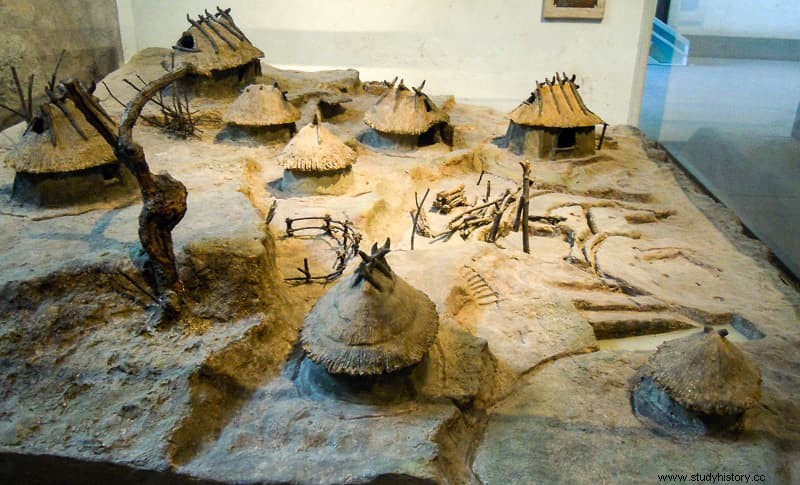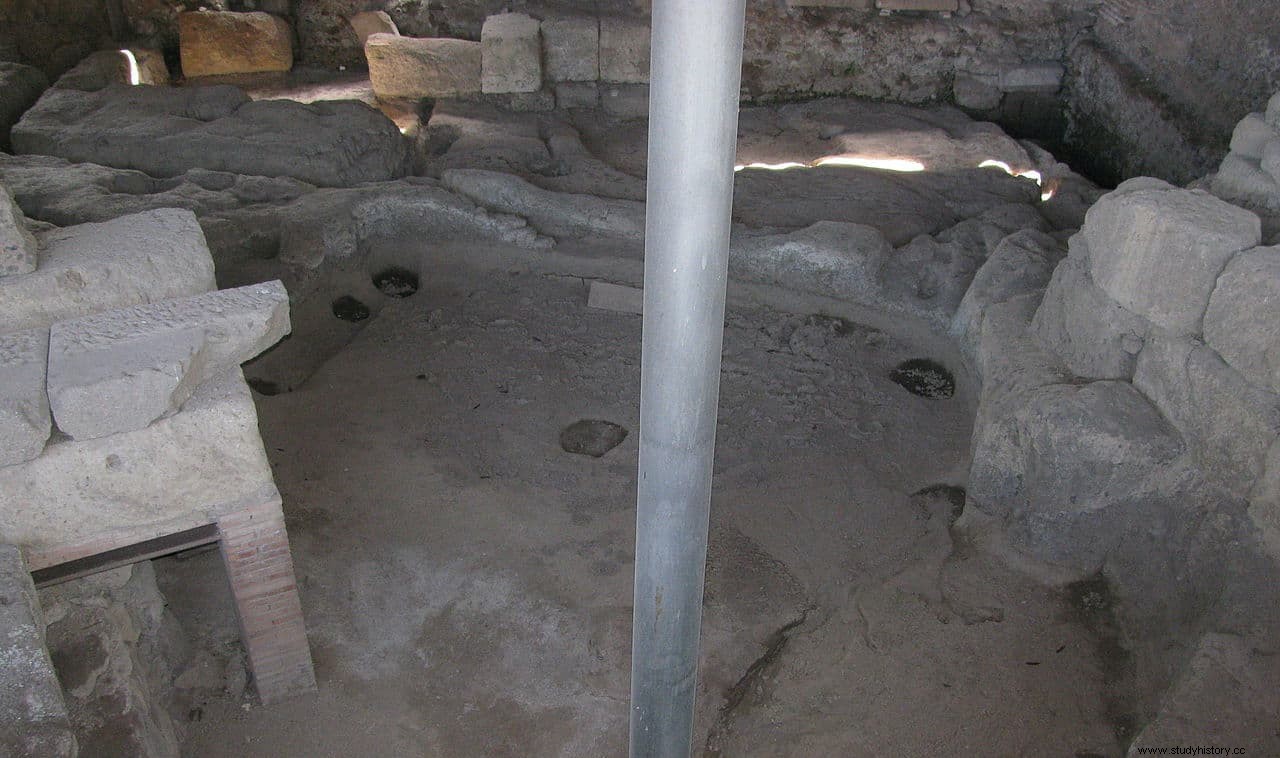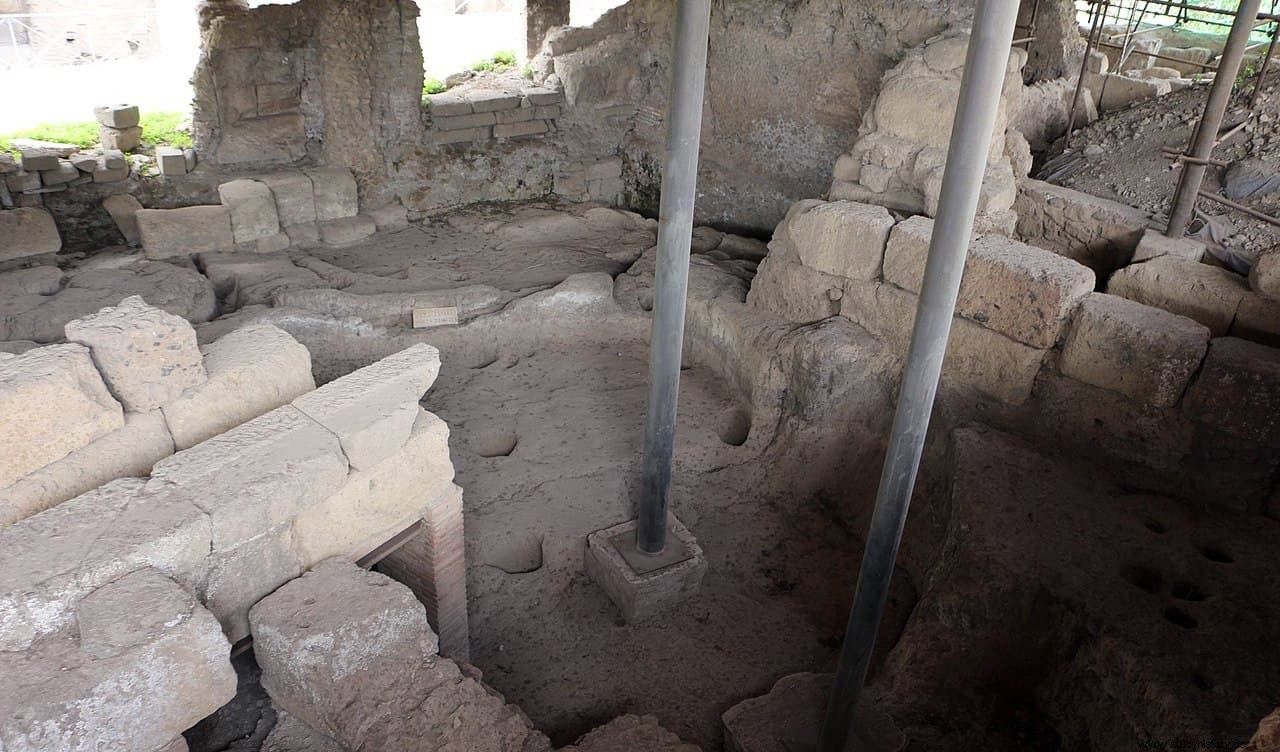Although the traditional date of foundation of the city of Rome is 753 BC, in reality the area was inhabited since the Iron Age, with some remains dating back to 900 BC. One of them is known as tugurium Romuli o House of Romulus, the supposed abode of the legendary founder of Rome.

It was found during excavations on the Palatine in 1872, located in its south-west corner near the Cacus staircase that went up from the Foro Boario and in the area that goes down towards the Circus Maximus, the place indicated by the ancient sources.
It was a traditional Latin cabin, with a single room with a thatched roof and walls of mud and reeds. According to Cassius Dio and Dionysius of Halicarnassus the building was repeatedly damaged by fire and storms, but each time carefully restored to its original, simple, unadorned state, as the Romans believed it to be the true abode of Romulus.

Dion Casio affirms that in the year 38 a.C. it was destroyed by fire as a result of a ceremony carried out inside by the priests who offered a sacrifice to Romulus as the god Quirinus.

Another fire took place in 12 B.C. to the death of Marcus Vipsanius Agrippa, when some ravens dropped on the thatched roof burning pieces of meat that they had taken from an altar.
It is believed that the so-called tugurium Faustini that the sources mention in the Palatine during the reign of Constantine (312-337 AD) could actually be the house of Romulus, which would still be preserved. In such a case, it would have remained intact until the 4th century AD.

When excavated in 1872, the house's foundation was found to be cut into the tuff bedrock, with six holes to insert posts arranged in a circle and one in the center, perhaps for the supporting struts of the walls and roof.
In 1946 new excavations also found remains of organic material, which was dated to the first Iron Age (between 900 and 700 BC).
